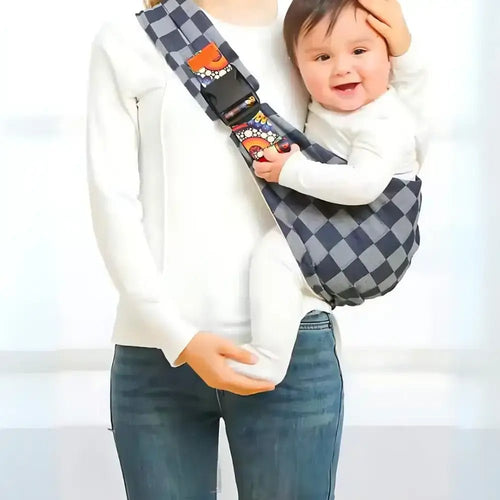
Best Nursing Pillow — A Complete, Practical Guide for New Parents
The right nursing pillow supports your body, brings baby to breast/bottle height, and protects your back and shoulders during long feeds. This guide compares pillow shapes and fills, shows how to match a pillow to your body type and delivery, and teaches comfortable positions, safe setup, cleaning, and smart buying criteria—so every feed feels easier.
Why a nursing pillow matters
A supportive pillow lifts baby to you (instead of you hunching to baby), reducing strain in the neck, shoulders, and lower back. Good elevation also stabilizes latch angles and bottle flow, helps protect healing abdominal tissue post-birth, and keeps arms from fatiguing during cluster feeds or night sessions.
Types & fills (C, U, wrap-around, twin, travel)
- C-shaped: Classic shape that hugs the waist on one side. Easy to position on couches and armchairs.
- U-shaped: Encircles the torso more evenly; often wider support behind the back.
- Wrap-around (strap/velcro): Locks in place; consistent height across feeds; less slipping on smooth fabrics.
- Twin pillows: Extra-wide platform for simultaneous feeding; firmer cores minimize sag.
- Inflatable/travel: Packs flat; height can be tuned with air; great for on-the-go grandparents’ homes.
Common fills: polyfill (light, plush), foam core (shaped support), memory foam (pressure relief), microbeads (moldable, lighter), and layered hybrids. Look for removable, machine-washable covers and, ideally, an inner liner that protects the core.
Match by body type, delivery & feeding style
- Body frame & height: Taller parents or long torsos usually prefer thicker or adjustable-height designs; petite frames often like slimmer profiles to avoid pushing baby too high.
- Birth recovery (C-section): Choose a firmer pillow with a cut-out or a wrap-around that sits above the incision line to minimize pressure.
- Breastfeeding positions: Football hold pairs well with wrap-around/twin platforms; cross-cradle works with C or U; laid-back benefits from softer, wider surfaces.
- Bottle-feeding: Any stable design works; pay attention to armrest height and recline angle to keep baby’s head elevated comfortably.
- Twins: Prioritize width, anti-slip fabrics, and firmness to support two stable latch zones.
-
Travel/small spaces: Inflatable or microbead designs compress easily; removable covers are essential.

Ergonomic positions (step-by-step)
Cross-cradle (newborn latch training)
- Place the pillow so the feeding side sits level with your ribcage—no shoulder hunching.
- Support baby’s neck/shoulders; bring baby to you (tummy-to-tummy), not the other way around.
- Keep ears–shoulders–hips aligned; adjust pillow thickness with a folded cloth if needed.
Football hold (post-C or for deeper latch)
- Wrap the pillow around your waist; place baby at your side, feet pointing behind you.
- Use the firm edge to maintain a straight line from ear to hip; avoid sinking near the incision.
- Elevate slightly with a small insert if shoulders start rising toward ears.
Laid-back (reflux or fast let-down)
- Lean back 20–30°; position a softer, wider pillow across your lap and under forearms.
- Let gravity soften flow; keep baby’s head above hips and chin tilted slightly up.
- Micro-adjust with a rolled towel under elbows to relax wrists.
Safety & setup checklist
- Supervision: Nursing pillows are not sleep surfaces. Always supervise; move baby to a safe sleep space after feeds.
- Breathing space: Keep baby’s nose/mouth unobstructed; avoid deep slumps or chin-to-chest positions.
- Stable base: Use on firm seats; avoid soft, sinking couches if baby’s airway could flex forward.
- Strap safety: If there’s a waist strap, secure comfortably—snug enough to prevent drift, not tight on the abdomen (esp. post-C).
- Hands-free bras: For pumping with a pillow under arms, ensure flanges stay centered and tubing isn’t kinked.
Cleaning, allergens & longevity
- Covers: Choose zippered, machine-washable covers; consider a second cover to rotate.
- Liners: A waterproof/PU-coated inner liner protects cores from leaks or spit-ups.
- Allergens: If sensitive, look for low-odor foams and OEKO-TEX/organic cotton covers; wash before first use.
- Shape care: Fluff polyfill pillows; air-out microbeads; spot-clean foam cores per brand guidance.
- Storage: Keep dry; avoid crushing under heavy items to preserve loft and edge support.
Multi-use beyond feeding (with supervision)
Many families use nursing pillows for supervised tummy time (short intervals), side-lying positioning while reading to older siblings, or as arm rests during pumping. Supervision is key; discontinue any setup that allows slumping or airway compromise.
Buyer checklist & quick decision matrix
| Need | Prioritize | Why |
|---|---|---|
| Post-C comfort | Wrap-around, firm edge, incision clearance | Reduces pressure and keeps baby elevated |
| Twins | Wide platform, anti-slip, high density | Stability for two latch zones |
| Small spaces/travel | Inflatable/microbead, spare cover | Packs small, cleans easily on the go |
| Back/neck relief | U-shape + lumbar insert | Encourages upright posture, reduces hunching |
| Mixed bottle/pump | Consistent height, washable liner | Works across feeding methods; easier cleanup |
Comfort stack between sessions
- Warm-up: 2–3 minutes of gentle heat on shoulders/back before long feeds.
- Micro-breaks: Reset posture every 10–15 minutes; drop shoulders, unclench jaw.
- Skin comfort between feeds: Some parents like reusable silver nursing cups for surface tenderness. Always remove before nursing or pumping.
- Hydration & snacks: Keep water within reach; establish a “feeding basket” with burp cloths, wipes, spare cover.
FAQ
Do I need a special pillow for twins?
Not mandatory, but a wider, firmer twin pillow simplifies simultaneous feeds and reduces mid-session re-positioning.
Is a nursing pillow necessary for bottle-feeding?
No, but many bottle-feeding caregivers love the arm and shoulder relief, especially during growth-spurt days.
Can I use it for tummy time?
Yes—with continuous supervision and for short intervals. Discontinue if baby’s posture suggests airway compromise.
What if my pillow feels too high/low?
Add/remove thin inserts (folded towel/blanket) or switch to a slimmer/thicker model that matches your torso height.


